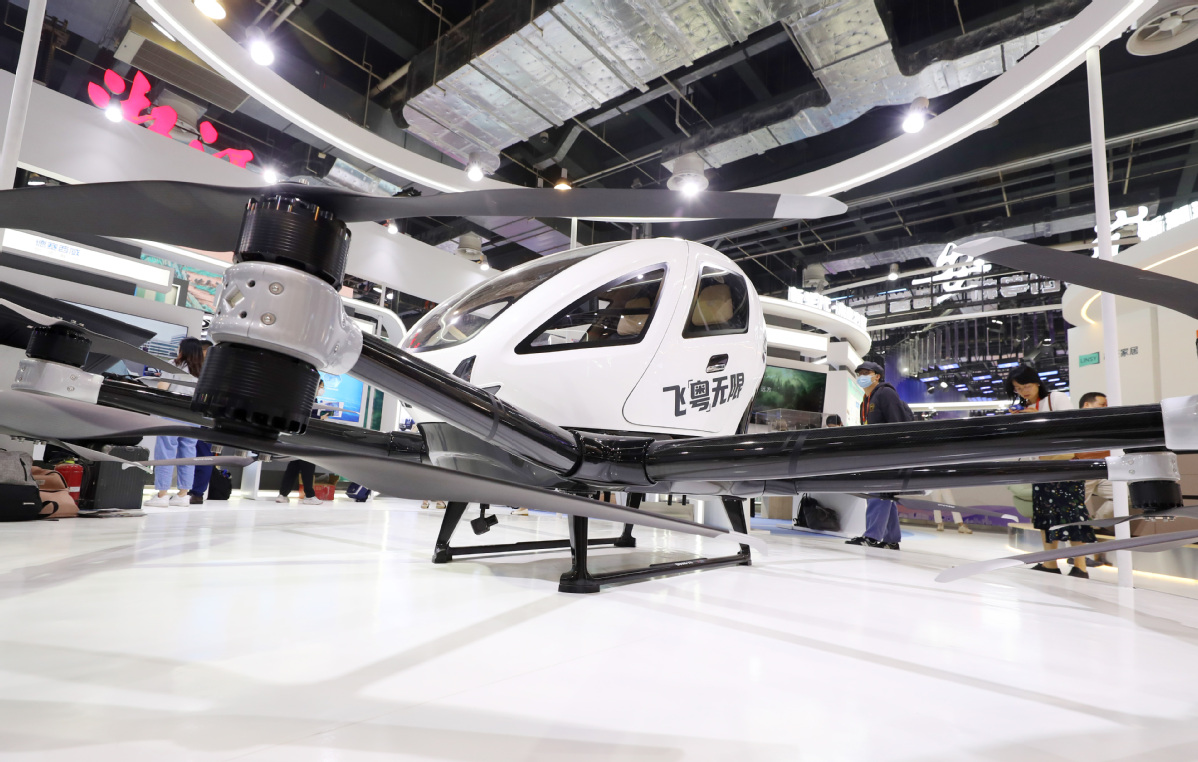
HAIKOU - As a strategic industry, the low-altitude economy is emerging as a forerunner in developing new quality productive forces across China, including the southern island province of Hainan.
On April 24, a remarkable show unfolded as a drone departed from an airport in the provincial capital Haikou and embarked on a three-hour flight to transport a batch of shrimp seedlings from the province's Wenchang City to an airport in Zhuhai, located in the neighboring Guangdong province, marking the first cross-sea public cargo transport through drone from Hainan to Zhuhai.
"This drone transport will greatly reduce transportation time and enhance the survival rate of aquatic seedlings, thereby playing a crucial role in cost reduction and efficiency improvement," said Yun Yongchao, general manager of a local marine biotechnology company in Wenchang.
He added that aquatic products were previously transported by land and ferry to Guangdong, taking about 13 hours, leading to high losses. "This cross-sea drone flight is a new model that provides us with a new transportation choice."
This cross-sea drone transportation exemplifies the advancement of new quality productive forces in Hainan, greatly improving the transportation efficiency of agricultural products between Hainan and Guangdong. It also contributes to the reduction of logistics costs and injects fresh vitality into the development of the low-altitude economy in both provinces.
As the only tropical island province in China, Hainan has over 300 days available for flights annually, which offers unique environmental advantages for developing the low-altitude economy.
In 2010, Hainan became one of the first pilot regions for low-altitude airspace management reform in the country. The province released a map for unmanned aircraft in 2023, demonstrating early and ongoing efforts to open up low-altitude airspace in the country.
According to Hu Qingqun, deputy general manager of China General Aviation Co., Ltd., as one of the first regions in the country to carry out low-altitude airspace management reform, Hainan has continuously strengthened the foundation for the development of the low-altitude economy by constructing general aviation airports throughout the province.
He noted that Hainan has established a relatively complete low-altitude management system and an efficient infrastructure service system.
In recent years, Hainan has developed its low-altitude economy according to local conditions, leading the country in low-altitude tourism, aviation sports, emergency rescue and other fields.
In 2023, Hainan ranked first in the country in terms of aerial tours and skydiving flights, with about 13,700 hours of flight time, 152,000 takeoffs and landings, and 364,800 passengers, accounting for approximately 45.9 percent, 63.2 percent and 61.1 percent of the national total, respectively, making Hainan the leading province in China's low-altitude tourism, according to official data.
"As a free trade port, Hainan enjoys more preferential policies. Key technologies such as drones and electric aircraft capable of vertical take-off and landing are developing rapidly. At the same time, people's demand for convenient travel and leisure tourism is increasing, and so is the market," said Li Yan, general manager of Sanya Base of China Southern Airlines General Aviation Co Ltd.
At present, Hainan has more than 160 locally registered general aviation companies and nearly 50 non-local general aviation companies.
Guo Yao, an official of the Hainan Provincial Development and Reform Commission, said that in the future, Hainan will harness its natural resource advantages to focus on commercial short-haul transportation, low-altitude tourism consumption, and marine economic development. This strategic focus aims to establish the province as a pilot demonstration area for the low-altitude economy and to inject new momentum into the high-quality development of the Hainan Free Trade Port.

